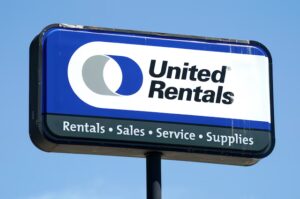By James Waite For Construction Pros Magazine
ADDRESSING THE UPDATES TO MEWP REQUIREMENTS FROM A LEGAL PERSPECTIVE
MEWPS ARE ONE OF THE SAFEST MEANS OF WORKING AT HEIGHT, YET THERE ARE RISKS. THESE HAD BEEN LARGELY DEALT WITH FROM A LEGAL PERSPECTIVE THROUGH AN ARRAY OF CONTRACT PROVISIONS AND GUIDANCE. BUT THE LAWS HAVE CHANGED.
As most people know, new requirements went into effect on June 1, 2020 for aerial equipment/mobile elevating work platforms (MEWPs). The new rules address a wide range of issues, including design (ANSI 92.20), safe use (ANSI 92.22), and training (ANSI 92.24) requirements. These replaced the old ANSI A92.3, 92.5, 92.6, and 92.8 standards and effectively changed everything from equipment classifications to how, when, where, and by whom they can be used.
Under the new standards, MEWPs are classified as follows:
By “Group,” technically, either:
- “Vertical” – One that does not allow the main platform to extend beyond the MEWP’s tipping line, such as a scissor or mast lift; or
- “Boom” – One that does allow the main platform to extend beyond the machine’s tipping line, such as an articulating boom lift (Note: personal fall protection equipment (PFPE) must be used on all Group B MEWPs).
By “Type,” based on their mobility (ability to travel), as:
- Type 1: Static: Travel permitted only when the MEWP is in its stowed position.
- Type 2: Mobile: Travel permitted when elevated/controls on chassis.
- Type 3: Mobile: Travel permitted when elevated/controls on platform.
For Manufacturers: For manufacturers and component suppliers, the new rules require several important modifications to designs and manufacturing processes, not to mention manuals, in order to accommodate the changes. These include new or updated wind-force, stability, load-sensing, and dynamic terrain-sensing requirements, as well as the elimination of flexible and chain-gates, revised rail height requirements, and revised toe board requirements for all entry/exit points.
For Dealers and Rental Operators: Of particular importance to dealers and rental operators are the new safe-use and training requirements for at least three reasons:
- They significantly impact customer safety.
- Obviously, proper training and safe (or unsafe) use materially affect the number and severity of incidents of equipment damage/destruction.
- Their impact on the potential for lawsuits based on allegations that the dealer or rental company “failed to fully and properly train, familiarize, and/or warn” customers will likely be considerable.
The new standards also made broad changes to training and safety procedures and their administration, including:
- Site and task-specific safe use requirements, as well as risk and hazard assessment, and mitigation or elimination of such hazards where possible;
- Selection and use of proper MEWPs and other equipment;
- Safe work procedures, including movement, stability monitoring, electrical hazard avoidance, and fall protection requirements;
- Provision and review of manufacturers’ manuals, instructions, and warnings;
- Maintenance, inspection, and repair requirements, which must be satisfied by properly trained personnel;
- On-demand familiarization requirements when requested by the user (a change from the old requirements, which automatically required the provision of familiarization upon delivery);
- Training requirements for MEWP “Users” (those who use or direct the use of MEWPs), “Operators” (those controlling the MEWP), “Occupants” (all persons occupying the MEWP), and “Supervisors” (those assigned by the User to monitor operator performance and supervise their work);
- Regular performance monitoring, supervision, and evaluation;
- Supervisor training;
- Prevention of unauthorized use;
- Safety of others;
- Emergency and rescue education and planning; and
- Records retention.
If you’re renting MEWPs and your rental contract doesn’t specifically address these issues, you need to update your contract while you have the opportunity and before a serious accident.
The requirements are now organized by “task” rather than by “responsible party,” meaning that a given user/operator must review its responsibilities with respect to each such task, rather than referring to a single combined statement of that party’s responsibilities.
Legal Effects for Dealers and Lessors: Although the standards themselves are not “laws” per se, they will almost certainly become the effective equivalents of laws as a result of: (a) the tendency of such standards to be incorporated into OSHA regulations (which are laws – See OSHA 1910 and 1926); and (b) the continued expansion of “products liability” lawsuits, which, for equipment providers, tend to start with allegations that they failed to provide proper training, familiarization, instructions, and/or warnings to their customers. Such claims can yield enormous recoveries against equipment dealers and lessors; in the worst cases, beyond the limits of their liability insurance policies.
This, coupled with the fact that lessors are no longer required to actually familiarize lessees with MEWPs (they can simply refer it out), will likely yield a general reduction in operator familiarity. Reduced familiarity inevitably yields increases in the frequency and severity of accidents. Consequently, given the legal landscape, particularly with respect to “negligence” and “products liability” (“failure to instruct” and “failure to warn”) claims, we continue to strongly encourage dealers and lessors to actually “provide” familiarization, and in any event, to document the fact that it, along with training and safety equipment, has been offered to customers, in an effort to limit the “failure to instruct” and “failure to warn” lawsuits inevitably filed against them after accidents.
This is a multi-million-dollar liability issue.
What to Do: For dealers and lessors, providing manufacturers’ manuals, instructions and warnings, offering (and where possible providing) familiarization and training, making fall protection equipment available on reasonable terms, and documenting the fact that they’ve done so, is imperative. Further:
- Review and Update Your Contracts: If you’re renting MEWPs and your rental contract doesn’t specifically address these issues, you need to update your contract while you have the opportunity and before a serious accident.
- Use an AWP/MEWP Addendum: Create and distribute to all aerial equipment/MEWP customers a new MEWP Addendum emphasizing the new training, supervision, maintenance, repair, and safety requirements. The Addendum should also include provisions requiring your customers to, among other things: (a) use, and make certain all others use, fall protection equipment; (b) carefully inspect all MEWPs before each use; and (c) indemnify (pay) you for claims arising from any failure to provide and/or adhere to the relevant safety and training requirements. (Note: Remember, no jury wants to turn away a grieving widow; if you’re the defendant in one of these lawsuits, you’d better have your documents in order. Jurors will not want to see that separate signature on your MEWP Addendum, but they won’t be able to ignore it or the fact that it releases you from liability).
- Post Signs and Use Decals: Safety signs inside store operations have become popular, as have safety decals on equipment. Adding these not only provides valuable safety information to customers, it can also be tremendously helpful in limiting the lessor’s liability (but only if properly written). I am generally a fan of such cost-effective safety enhancements for both reasons, but never use these as substitutes for signed documents.
- Check Your Insurance: Make certain you have adequate liability and “products completed operations” (products liability) coverage. If you’re selling Damage Waiver or Rental Equipment Protection plans or the like, make certain your insurance coverage doesn’t “except” (exclude) equipment on which you sell such plans. As claims and jury awards continue to expand, plaintiffs’ recoveries “beyond policy limits” become an ever-greater threat to equipment dealers and lessors. A single multi-million-dollar award in a products liability lawsuit can have devastating consequences if you haven’t updated your coverage. If you are renting aerial equipment/MEWPs, make doing this a priority.
- Tampering: Never tamper with or disable safety devices such as load and tilt sensors, and carefully inspect your equipment after each rental (you never know when a customer might decide doing so is necessary in order to facilitate completion of a job). If you find that any safety component has been tampered with and/or impaired, immediately discontinue use of, isolate, and tag the machine for repairs/maintenance.
- Review the Relevant Laws and Standards: Depending on your location, these may include OSHA 1910 and 1926, ANSI A92, CSA C225 and B354, ISO 16368, and/or European EN280. Also, if you find yourself reluctant to review lengthy regulations and standards, excellent summaries, discussions, and Q&As appear on several websites. See, for example, ANSI, CSA, IPAF, the Scaffold & Access Industry Association, and, of course, the ARA.
MEWPs are, without question, the safest means of working at height in most situations. Nonetheless, working at height can yield significant, and sometimes unavoidable, risks. These had been largely dealt with from a legal perspective through an array of contract provisions, manuals, and technical guidance provided by various industry organizations. But the laws have changed.
Fortunately, IPAF, ANSI, OSHA, and the CSA Group made their intentions known far in advance for implementation, which provided an opportunity for industry participants to get prepared operationally and legally. For those who haven’t yet done so, it is now imperative that you get your documents in order. Feel free to contact us if we can help
VIEW ARTICLE ON FOR CONSTRUCTION PROS MAGAZINE WEBSITE



